Pan-Seared Porterhouse Steak
This post may contain affiliate links. See my disclosure policy.
My restaurant-quality porterhouse steak recipe is super juicy and tender and cooks in no time. It’s one of the most impressive steak recipes you can serve to a crowd!
Love juicy steaks? Try my filet mignon, skirt steak, flank steak, and New York steak.
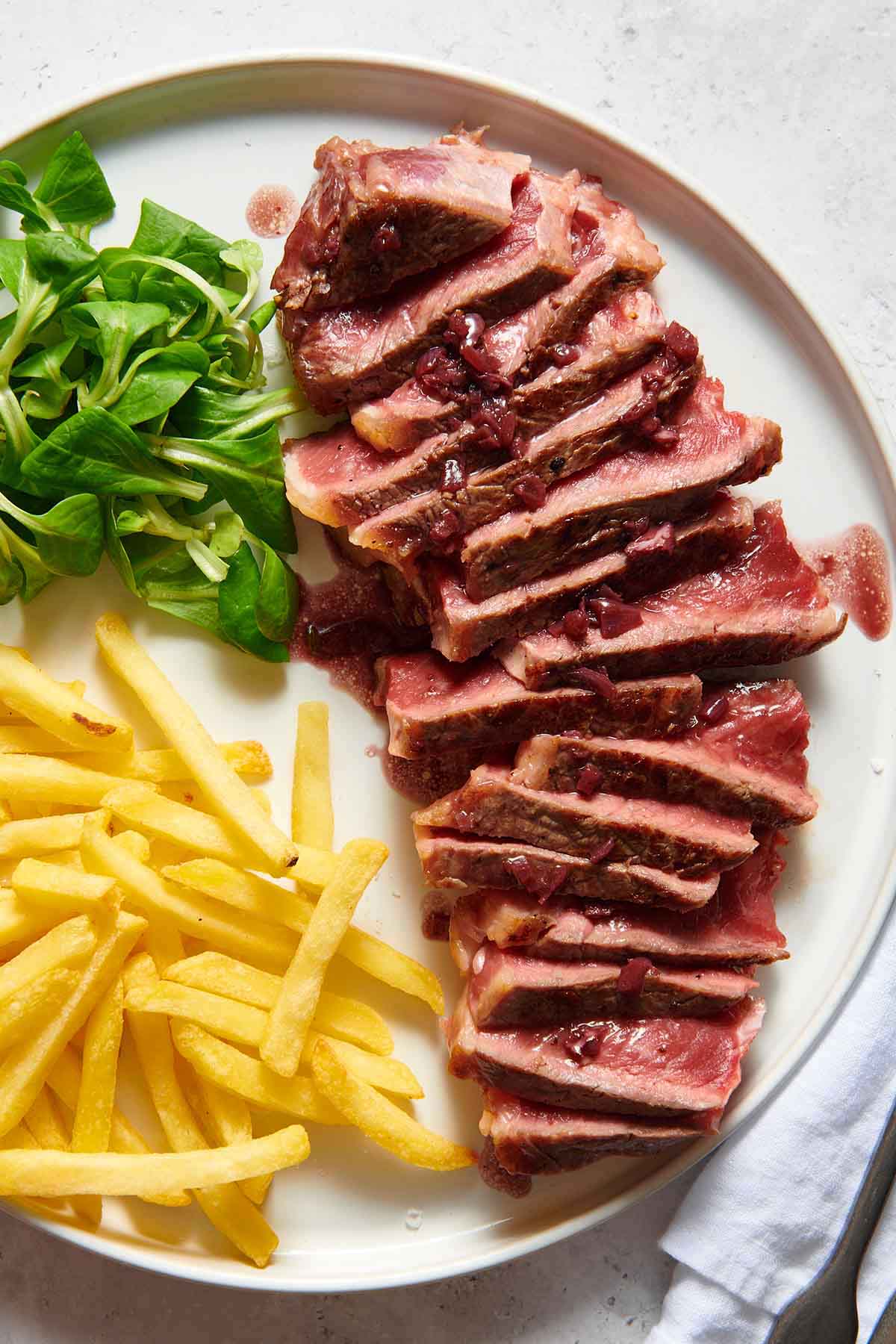
My family loves it when I cook steak, so I try to cook it at least once a week. Porterhouse steaks are one of my favorites because they’re easy to find, affordable, and easy to jazz up.
Porterhouse steak is called “the king of steaks” for good reason: it’s a huge hunk of meat!
Every bite is incredibly flavorful, beefy, and melt-in-your-mouth tender. I keep things simple with a wine reduction sauce, and honestly, it tastes better than anything from a steakhouse…and it’s so much cheaper, too!
What is porterhouse steak?
A porterhouse steak is a large, premium cut of beef that includes portions of both the tenderloin and the strip steak, separated by a T-shaped bone. Known for its tenderness and rich flavor, it’s one of the most prized cuts and is often large enough to serve at least two people.
Table of Contents
Why I love this recipe
- Simple to cook. Cooking porterhouse steak requires very little preparation, and its rich flavor doesn’t require a marinade or dry rub.
- Fast! Like my garlic butter steak bites or air fryer steak, this cooks in no time.
- Perfect texture. If you aren’t a fan of super chewy steaks, this one is for you. It’s tender but soft to bite into- it almost melts in your mouth.
- Multiple cooking methods. I like to grill or pan fry it, but you can also air fry it and smoke it.
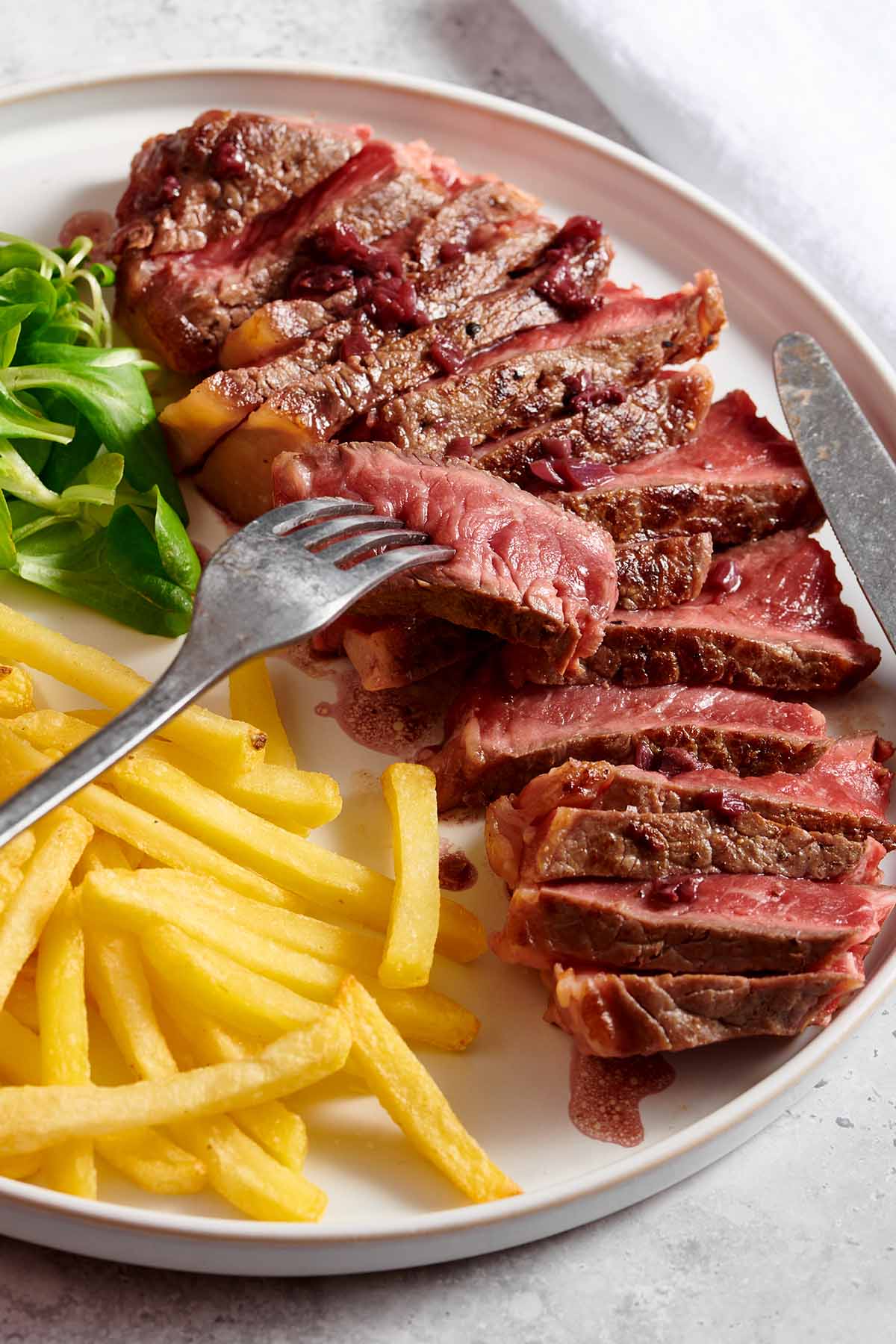
Ingredients needed
- Porterhouse steaks. Both boneless and bone-in steaks can be used. I prefer to get my steaks from a butcher so I can choose one with more meat than bone and with little marbling.
- Olive oil. To sear the steaks. I typically use butter with frying or grilling steaks too, but as this is already in the reduction, we can omit it.
- Shallots and garlic. These two deepen the savory flavors in the red wine reduction.
- Red wine. When making a reduction sauce, it’s best to use a rich and full-bodied red wine, like Cabernet Sauvignon or Merlot.
- Beef stock. This gives the red wine sauce an irresistibly savory and beefy flavor.
- Dijon mustard. For a nice tangy flavor in the sauce.
- Thyme sprigs. Thyme is best, or you can use fresh rosemary.
- Butter. Stirring a knob of butter into the red wine reduction gives the sauce a silky smooth mouthfeel.
- Kosher salt and black pepper. To taste.
How to cook a Porterhouse steak
I’ve included step-by-step photos below to make this recipe easy to follow at home. For the full printable recipe instructions and ingredient quantities, scroll to the recipe card at the bottom of this post.
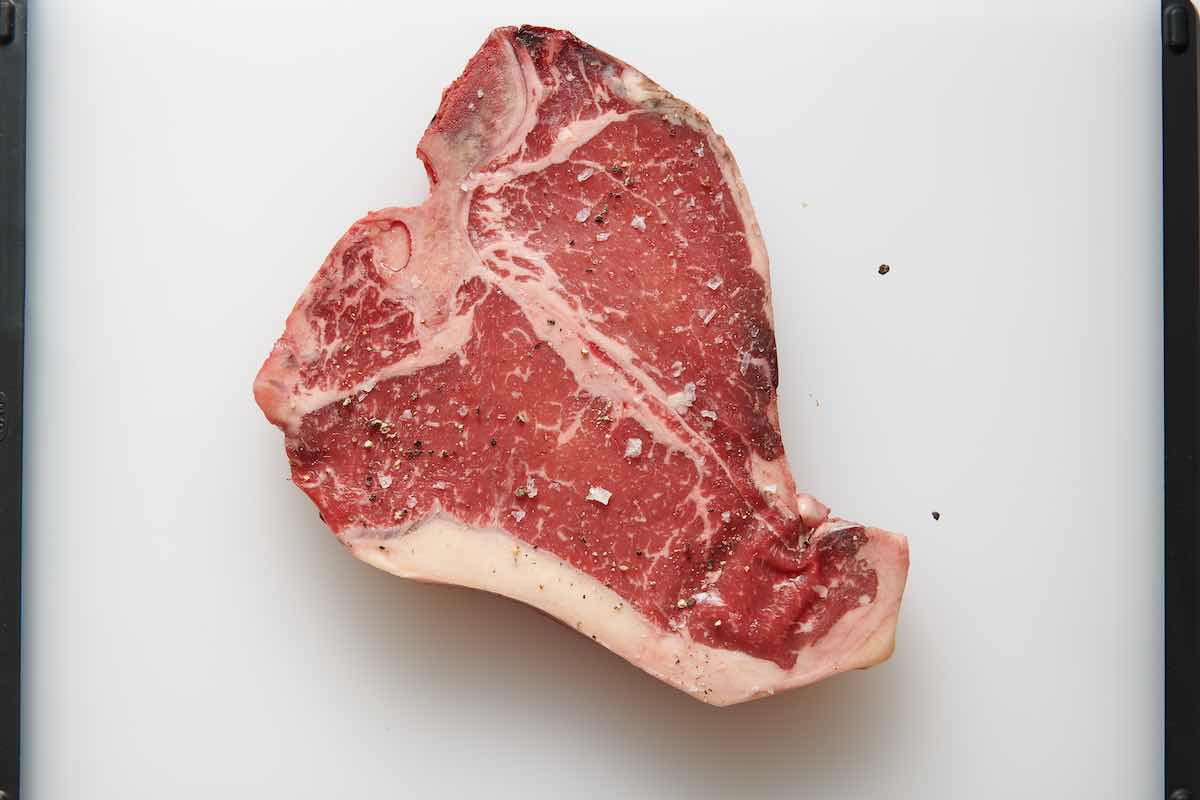
Step 1- Season. Pat the steaks dry, then season both sides with salt and pepper.

Step 2- Sear. Heat the oil in a cast iron skillet. Once it’s hot, add the steaks and sear on both sides. Transfer to a plate and loosely cover them with foil.
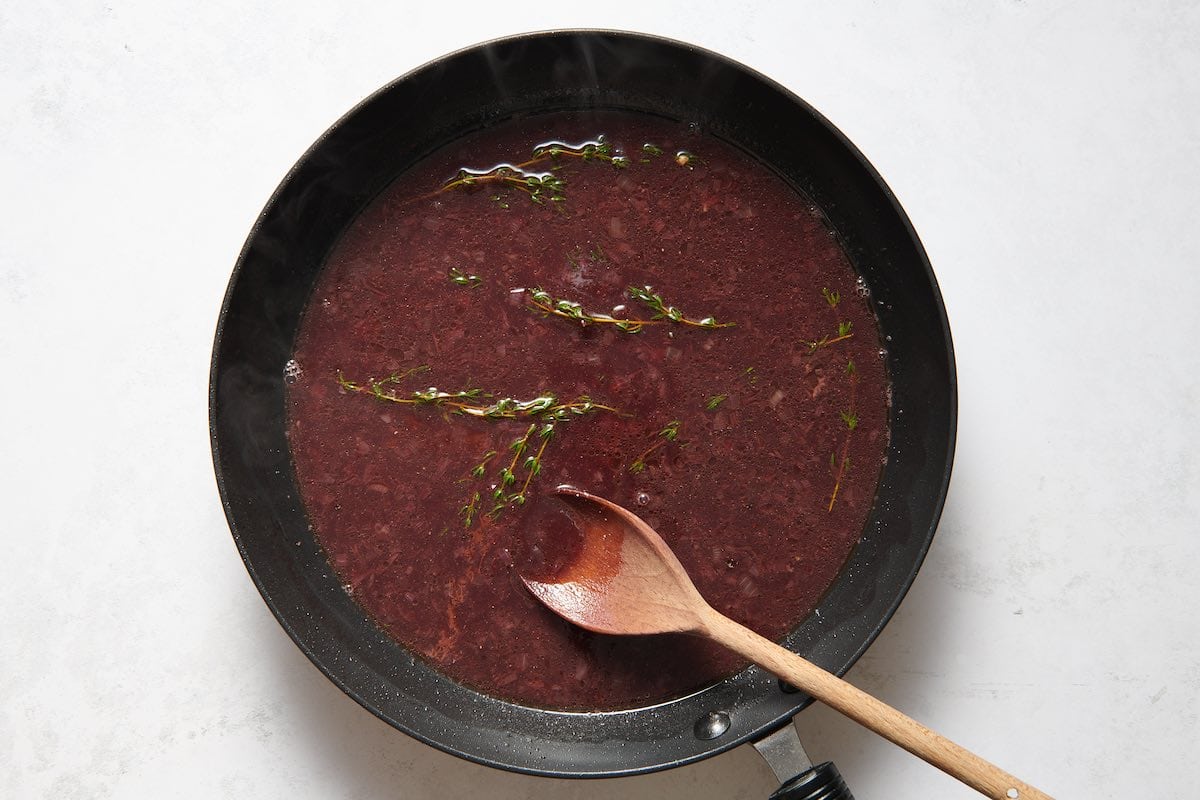
Step 3- Make the red wine reduction. Add more oil to the now empty skillet. Saute the shallots and garlic until fragrant, then deglaze the pan with red wine. Once reduced, stir in the beef stock, mustard, and fresh thyme and bring it to a boil. Stir in the butter to finish.
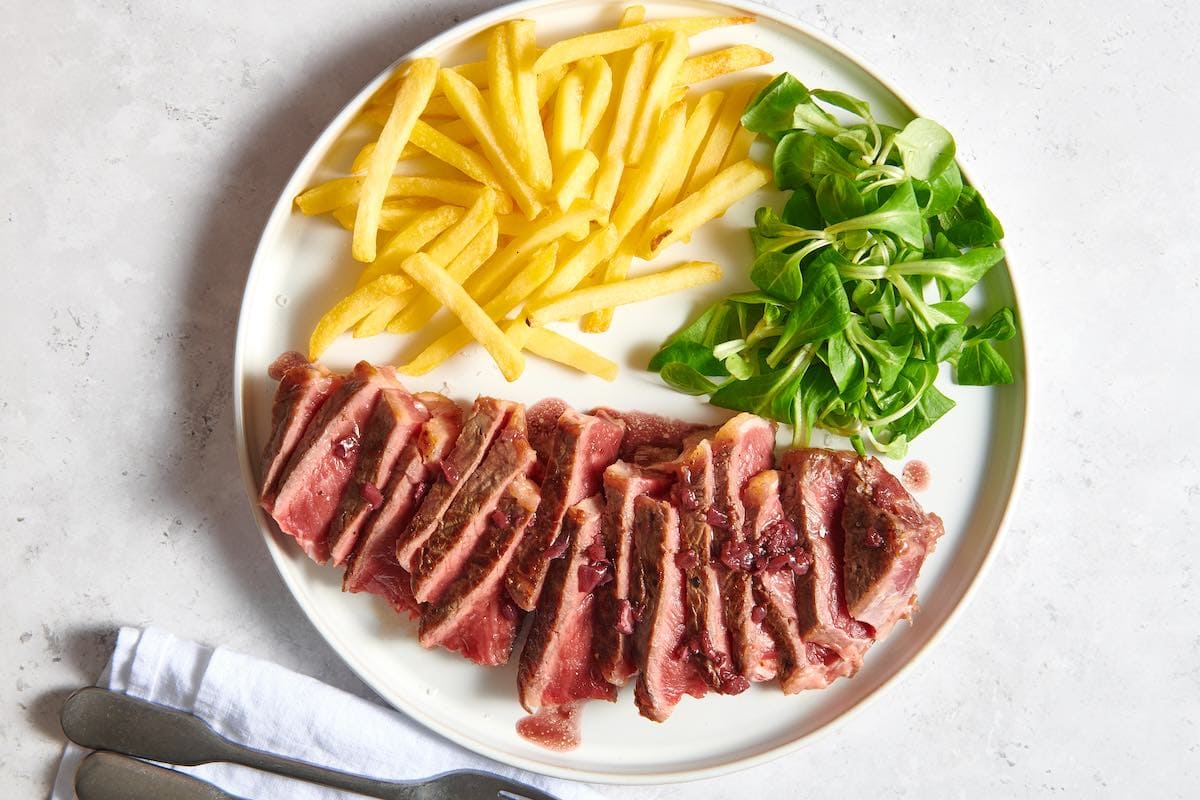
Step 4- Serve. Plate the steaks, then drizzle some of the red wine sauce over top of each one.
Steak cooking temperature
Always use a meat thermometer to double-check the doneness of the steak. Here are the various temperatures and doneness levels:
- Rare – 120ºF
- Medium-rare – 130ºF
- Medium – 135ºF
- Medium-well – 140ºF
- Well-done – 150ºF
Remember that the steaks will continue to come up to temperature when they’re taken off the heat. This is why it’s best to remove them from the skillet when they’re 5 degrees away from your perfect temperature.
Arman’s recipe tips
- Let the steaks come down to room temperature before cooking. To do so, take them out of the fridge at least 30 minutes ahead of time.
- Porterhouse steak is best cooked to medium-rare. Anything above medium, and you’ll miss out on its signature textures and flavors.
- Let the steaks rest for at least 10 minutes after cooking! This gives the natural juices time to soak back into the meat, giving you better-tasting and juicier steak.
- Marinate! I sometimes change up the flavor by soaking the meat in a flavorful marinade for 1-2 hours before cooking. Asian sauces, like bulgogi sauce or eel sauce, are especially tasty.
Storage instructions
To store: Store the leftover steak in an airtight container in the fridge for up to 3 days.
To freeze: The cooked and cooled steak can be frozen in a freezer-safe container or ziplock bag for up to 6 months. Let it thaw overnight in the refrigerator before heating up.
To reheat: Reheat the steak in a baking dish in a 275ºF oven until the internal temperature reaches 130ºF degrees.
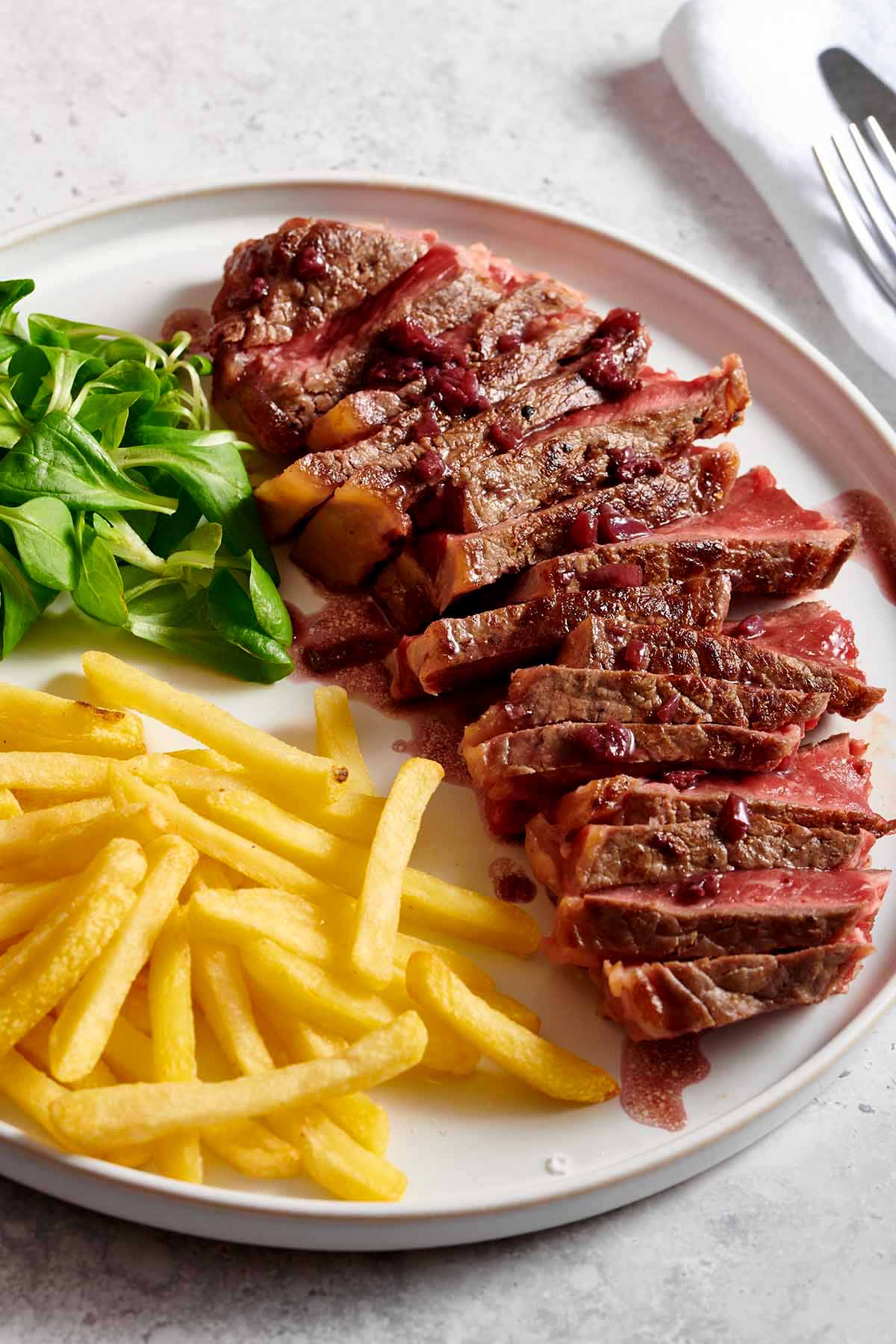
Frequently asked questions
Porterhouse and t-bone steaks both come from the same cut, but porterhouse steaks are much thicker and contain more tenderloin than t-bone steaks.
More impressive beef dinners

Pan-Seared Porterhouse Steak
Video
Ingredients
- 2 tablespoons olive oil
- 4 porterhouse steaks 6-8 ounces each
- 2 shallots finely chopped
- 1 clove garlic minced
- 1 cup red wine
- 1 cup beef broth
- 1 teaspoon Djion mustard
- 6 sprigs thyme
- 2 tablespoons butter
- 1/2 teaspoon salt
- 1/2 teaspoon pepper
Instructions
- Season steaks with salt and pepper.
- Add one tablespoon of oil to a non-stick skillet and place over medium heat. Once hot, add the steaks and cook for 3-4 minutes per side. Remove from the skillet and cover with foil to rest.
- Add the second tablespoon of oil to the skillet. Add the shallots and garlic and cook until fragrant. Add wine and simmer until it reduces by half. Stir in the beef stock, mustard, and thyme sprigs. Bring to a boil.
- Reduce heat to low and simmer for 8-9 minutes, until it has thickened slightly. Stir in the butter.
- Discard the thyme sprigs and serve immediately.
Notes
Nutrition
Originally published July 2023, updated and republished April 2024














Best porterhouse steak recipe I’ve ever made in my life.